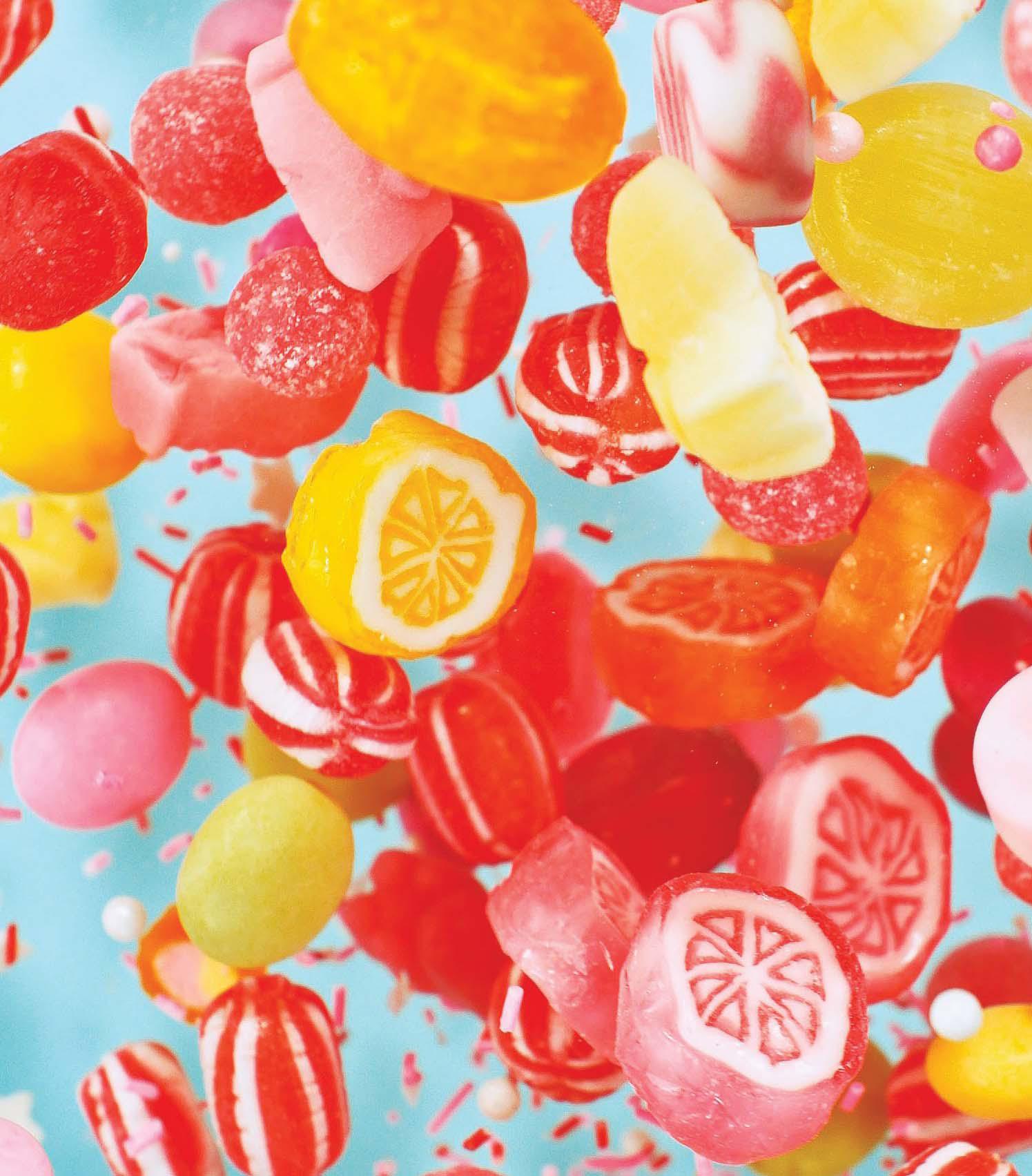SUGAR RUSH
The Week Junior Science+Nature UK
|Issue 74
Join the candy craze as Claire Karwowski studies the sugary science of sweets.
-

Imagine you’re walking down the sweet aisle at your local grocery store. You see flying saucers, sour gummies, Maltesers, Mars bars and so much more. Sure, at first glance – and bite – these sweets may taste, look, smell and feel different, but if you boil them all down (literally) they all have the same base ingredient: sugar. It is only when sugar mixes with science that it shapeshifts into your favourite sweets. So how are different candies made? Why do you crave them? Who is hard at work making the world taste so good? Let’s dive into the wild world of sweets to find out.
Candy chemistry
Candy-making is a lesson in chemistry – a type of science that studies how substances change when they react with each other. To make different sweets, candy makers (also known as “food engineers”) combine sugar, water and other ingredients – flavourings and gelatins (substances that form a stiff jelly) – and then bring them to a boil. Boiling the mixture causes a chemical reaction that changes the structure of sugar. Once that happens, the sugar mixture is ready to be cooled. It is the cooling process that determines what form the sugar will take. All candy can be sorted into two categories: crystalline or non-crystalline. Crystalline candies are continuously stirred as they cool, which makes smooth, easy-to chew sweets like fudge. Non-crystalline candies are usually more brittle-like sticks of rock and lollipops. The mixture is boiled at a much higher temperature, which gives it a hard glassy texture.
Sweet school
Esta historia es de la edición Issue 74 de The Week Junior Science+Nature UK.
Suscríbete a Magzter GOLD para acceder a miles de historias premium seleccionadas y a más de 9000 revistas y periódicos.
¿Ya eres suscriptor? Iniciar sesión
MÁS HISTORIAS DE The Week Junior Science+Nature UK

The Week Junior Science+Nature UK
FIGHTING THE FREEZE
Claire Karwowski uncovers nature's wildest ways of fighting the winter freeze.
6 mins
Christmas 2025
The Week Junior Science+Nature UK
Cook up bioplastic decorations
Make your own eco-friendly ornaments.
1 min
Christmas 2025

The Week Junior Science+Nature UK
Should we switch off Christmas lights?
They brighten up the festive season, but they can have a negative impact on the environment.
1 mins
Christmas 2025
The Week Junior Science+Nature UK
Three spectacular illuminations
Glow Wild, Wakehurst
1 min
Christmas 2025

The Week Junior Science+Nature UK
THE LAST DAYS OF POMPEII
For the first time, an immersive exhibition about the destruction of the ancient Roman city of Pompeii has opened in London.
1 min
Christmas 2025

The Week Junior Science+Nature UK
Wildlife watch
Jenny Ackland unveils a winter wonderland of natural delights this festive season.
1 mins
Christmas 2025
The Week Junior Science+Nature UK
Make Snow globes
Create the perfect Christmas gift.
1 min
Christmas 2025

The Week Junior Science+Nature UK
Maggie Aderin-Pocock
Meet the scientist \"blasting off into space\" at the Christmas Lectures.
3 mins
Christmas 2025
The Week Junior Science+Nature UK
Make vegan eggnog
Whip up a dairy-free festive winter warmer that is perfect for cold nights.
1 min
Christmas 2025

The Week Junior Science+Nature UK
Octopuses
Meet the colour-changing, shape-shifting, fortune-telling aliens of the seas.
2 mins
Christmas 2025
Listen
Translate
Change font size

